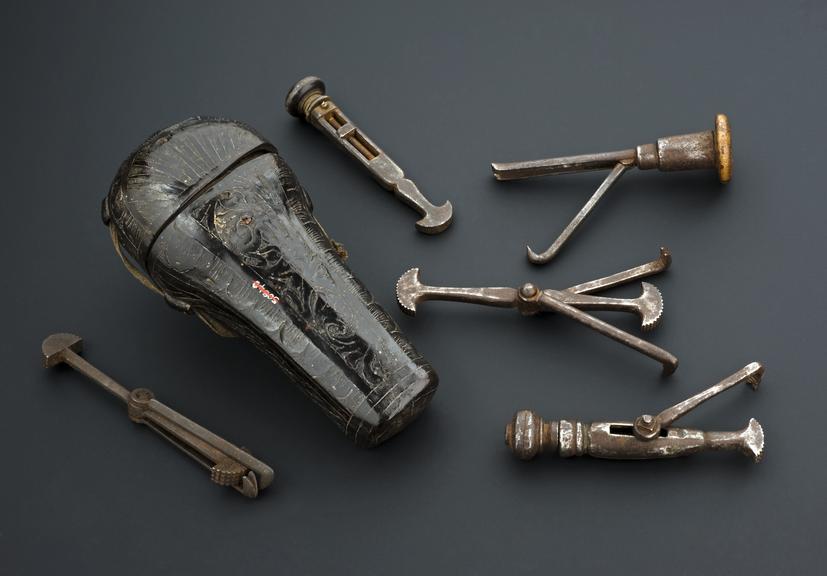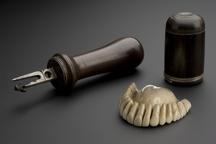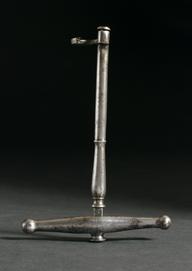


Dental instruments comprising five pelicans in tooled leather case, 18th century, French, Dr. Hamonic Collection, leather, steel and wood
These dental pelicans are so-called because they resemble a pelican’s beak. The instruments were used for tooth pulling – the tooth was removed sideways! The claw was placed over the top of the tooth and the fulcrum, the semi-circular piece of metal at the end, was placed against the gum. The pressure from the lever would remove the tooth. This was undoubtedly painful for the patient and possibly caused damage to the gums and surrounding teeth. Tooth pulling was the only cure for diseased teeth and toothache which was carried out by barber-surgeons and travelling practitioners.
Details
- Category:
- Dentistry
- Collection:
- Sir Henry Wellcome's Museum Collection
- Object Number:
- A121693
- Materials:
- incomplete, leather, cotton, steel and wood (unidentified)
- Measurements:
-
overall: 60 mm x 85 mm x 47 mm, .47kg
overall (largest pelican): 33 mm x 20 mm x 33 mm, 0.062 kg
overall (case): 60 mm x 176 mm x 75 mm, 0.096 kg
pelican: 115 mm
- type:
- dental instrument
- credit:
- Hamonic Collection



